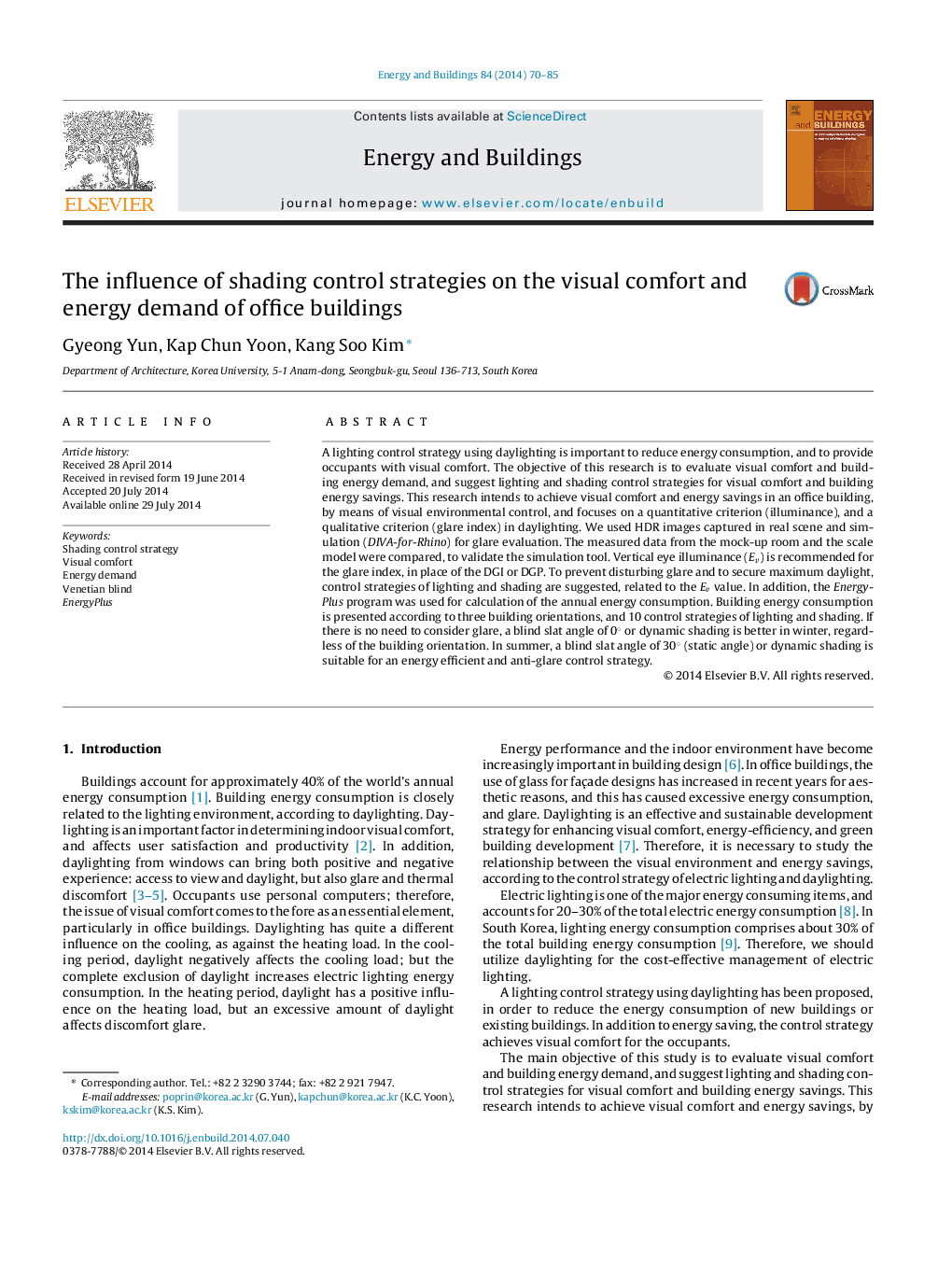| کد مقاله | کد نشریه | سال انتشار | مقاله انگلیسی | نسخه تمام متن |
|---|---|---|---|---|
| 262861 | 504052 | 2014 | 16 صفحه PDF | دانلود رایگان |
• The objective is to evaluate the visual comfort and building energy demand.
• We suggest the lighting and shading control strategies for visual comfort and building energy savings.
• The vertical eye illuminance (Ev) is recommended for the glare index.
• A blind slat angle of 0° or dynamic shading is better in winter regardless of the building orientation.
• In summer, a blind slat angle of 30° or dynamic shading is suitable for an energy efficient and anti-glare control strategy.
A lighting control strategy using daylighting is important to reduce energy consumption, and to provide occupants with visual comfort. The objective of this research is to evaluate visual comfort and building energy demand, and suggest lighting and shading control strategies for visual comfort and building energy savings. This research intends to achieve visual comfort and energy savings in an office building, by means of visual environmental control, and focuses on a quantitative criterion (illuminance), and a qualitative criterion (glare index) in daylighting. We used HDR images captured in real scene and simulation (DIVA-for-Rhino) for glare evaluation. The measured data from the mock-up room and the scale model were compared, to validate the simulation tool. Vertical eye illuminance (Ev) is recommended for the glare index, in place of the DGI or DGP. To prevent disturbing glare and to secure maximum daylight, control strategies of lighting and shading are suggested, related to the Ev value. In addition, the EnergyPlus program was used for calculation of the annual energy consumption. Building energy consumption is presented according to three building orientations, and 10 control strategies of lighting and shading. If there is no need to consider glare, a blind slat angle of 0° or dynamic shading is better in winter, regardless of the building orientation. In summer, a blind slat angle of 30° (static angle) or dynamic shading is suitable for an energy efficient and anti-glare control strategy.
Journal: Energy and Buildings - Volume 84, December 2014, Pages 70–85
